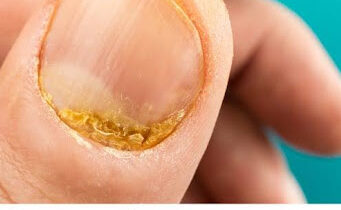Living with diabetes can be like juggling. You need to keep your blood sugar levels in check, which means watching what you eat, exercising, and taking medications. But sometimes, another problem pops up – fingernail fungus. This can be frustrating because it adds one more thing to worry about. Some people may confuse it with a foot ulcer, but it’s different.
Don’t worry, though! This guide will help you handle both diabetes and fingernail fungus. We’ll break down easy-to-follow tips for managing your blood sugar, and also show you how to fight off that stubborn nail infection. By learning how to take care of diabetes and fingernail fungus, you’ll feel better overall and be in charge of your health.

So, get ready to learn some helpful tricks. With a little effort, you can keep your diabetes under control and say goodbye to fingernail fungus for good!
Understanding the Diabetes
Diabetes, a seemingly complex condition, boils down to a simple imbalance – the body’s struggle to manage sugar (glucose) levels in the bloodstream. Here’s a breakdown to shed light on this condition:
The Role of Sugar:
Glucose, the body’s primary energy source, comes from the food we eat. The pancreas, a vital organ, produces insulin, a hormone that acts like a key, unlocking the doors for glucose to enter cells and be used for energy.
The Glitch in the System:
In diabetes, this system malfunctions. There are two main types:
Type 1 Diabetes: In this case, the body doesn’t produce enough insulin, leaving the “doors” locked, and glucose builds up in the bloodstream instead of reaching the cells.


Type 2 Diabetes: Here, the body either doesn’t produce enough insulin or becomes resistant to its effects, leading to a similar problem with glucose entering cells.
The Consequences:
When glucose levels remain high for extended periods, it can damage various organs and systems, leading to long-term complications like nerve damage, vision problems, and kidney disease.
Understanding the Fingernail Fungus
Fingernail fungus, also known as onychomycosis, is a common and persistent infection that targets the nails. This unwelcome guest thrives in warm, moist environments, often making your nails its home. Understanding how it works can help you identify and combat this pesky problem.

The culprits behind this infection are microscopic fungi, similar to mold. They feed on keratin, a protein found in your nails, hair, and skin. When these fungi take hold, they can cause a variety of changes in your nails:
- Discoloration: Nails can turn white, yellow, or even black, losing their natural healthy sheen.
- Thickening and Crumbling: The nail plate may become thicker and more brittle, prone to cracking or crumbling at the edges.
- Detachment: In severe cases, the fungus can cause the nail to separate from the nail bed, leading to pain and potential discomfort.
While not life-threatening, fingernail fungus can be unsightly and cause embarrassment. It can worsen existing nail conditions and make daily activities like buttoning clothes or typing difficult.
How to Take Care of Diabetes and Fingernail Fungus
Living with diabetes requires a multifaceted approach to maintaining optimal health. While managing blood sugar levels remains the cornerstone, other concerns like fingernail fungus can also arise.
Some effective strategies like managing diabetes, healthy lifestyle, balancing both, etc can tackle both diabetes and fingernail fungus challenges simultaneously. This empowers you to navigate a well-rounded path toward overall well-being.
Managing Your Diabetes
- Diet: A balanced, diabetes-friendly diet forms the foundation. Focus on whole grains, fruits, vegetables, and lean protein while limiting processed foods, sugary drinks, and unhealthy fats.
- Exercise: Regular physical activity helps your body utilize insulin more effectively and lowers blood sugar levels. Aim for at least 30 minutes of moderate-intensity exercise most days of the week.
- Medication: If diet and exercise alone aren’t sufficient, your doctor may prescribe medications like oral medications or injectable insulin to manage blood sugar levels.
- Blood Sugar Monitoring: Regularly monitoring your blood sugar levels allows you to understand how your body reacts to food, exercise, and medication. This empowers you to make adjustments to your management plan.
- Foot Care: Diabetes can decrease blood flow and sensation in the feet, increasing the risk of foot infections. Practice daily foot checks for cuts, sores, or changes in skin texture. Wash your feet daily with warm water and mild soap, and moisturize them to prevent dryness and cracking.
Living a Healthy Lifestyle
Beyond the core strategies, adopting a healthy lifestyle is vital:
- Maintaining a Healthy Weight: Losing excess weight can significantly improve insulin sensitivity for better blood sugar control.
- Regular Checkups: Schedule regular checkups with your doctor to monitor your overall health, including blood sugar levels, eye health, and foot health.
- Stress Management: Chronic stress can elevate blood sugar levels. Practice relaxation techniques like yoga or meditation to manage stress effectively.

Combating Fingernail Fungus:
Fingernail fungus, while not a direct consequence of diabetes, can be more prevalent in individuals with diabetes due to compromised immune function and slower wound healing. Here’s how to combat it:
- Early Detection: Identifying signs and symptoms early is crucial for successful treatment. Consult your doctor for a diagnosis and treatment plan.
- Topical Antifungal Medications: Creams, lotions, or lacquers applied directly to the affected nail are a common first-line treatment.
- Oral Antifungal Medications: In severe cases, your doctor may prescribe oral antifungal medications to target the infection from within.
- Home Care: Maintaining good hygiene practices like keeping nails clean and dry, wearing well-fitting shoes, and avoiding tight-fitting socks helps prevent fungal growth.
- Managing Underlying Conditions: Diabetes can increase the risk of fingernail fungus. By controlling your blood sugar levels, you can create a less hospitable environment for the fungus to thrive.
Living with Both Conditions: A Balanced Approach
Managing both diabetes and fingernail fungus requires a balanced and coordinated approach:
- Prioritize Blood Sugar Control: Always prioritize consistent blood sugar management. This forms the foundation for overall well-being and reduces the risk of complications from diabetes.
- Seek Early Treatment for Nail Fungus: Don’t ignore signs of fingernail fungus. Early diagnosis and treatment ensure better outcomes and prevent the infection from worsening.
- Communicate with Your Doctor: Open communication with your doctor is vital. Discuss both your diabetes management and fingernail fungus concerns. Your doctor can provide tailored advice and monitor your progress.
- Maintain a Healthy Lifestyle: Embracing a healthy lifestyle, including good nutrition, regular exercise, and stress management, benefits both diabetes and overall well-being.

Final Thoughts
While managing diabetes and fingernail fungus requires effort, it doesn’t have to limit your well-being. This knowledge empowers you to take control. You can navigate both challenges effectively through proactive strategies and prioritizing healthy habits.
Remember, you’re not alone. Embrace support and celebrate your progress. With dedication, you’ll achieve a healthier, brighter future. So take charge and step forward with confidence on your path to optimal health.
Frequently Asked Questions
What are the different types of diabetes?
There are two main types: Type 1 diabetes, where the body doesn’t produce enough insulin, and Type 2 diabetes, where the body either doesn’t produce enough insulin or becomes resistant to its effects.
How can I manage my blood sugar levels?
A combination of diet, exercise, medication (if prescribed), and regular blood sugar monitoring is crucial for maintaining healthy blood sugar levels.
Why is good foot care important for people with diabetes?
Diabetic neuropathy (nerve damage) can affect sensation in the feet, increasing the risk of undetected injuries and infections. Regular foot care helps prevent complications.
What are the symptoms of fingernail fungus?
Signs include discoloration (white, yellow, or black), thickening and crumbling of the nail plate, and potential separation of the nail from the nail bed.
What are the treatment options for fingernail fungus?
Over-the-counter antifungal creams or lacquers are used for mild cases. For severe infections, oral antifungal medications prescribed by a doctor might be necessary.
How can I prevent the spread of fingernail fungus?
Maintain good foot hygiene, wear clean, dry socks, and avoid sharing personal items like nail clippers.
Does having diabetes make me more prone to fingernail fungus?
Yes, due to compromised immune function and slower wound healing in individuals with diabetes, fingernail fungus can be more prevalent.
Should I prioritize blood sugar control or fingernail fungus treatment?
Always prioritize blood sugar control as it forms the foundation for overall well-being and reduces the risk of complications from diabetes.
How can I find support for managing both diabetes and fingernail fungus?
Talk to your doctor and consider joining support groups for both conditions to connect with others and learn from their experiences.

Leave a Reply